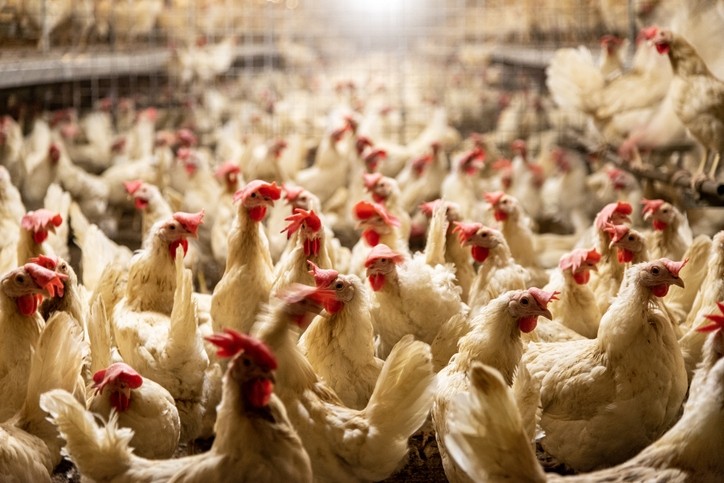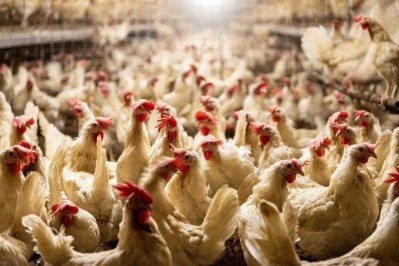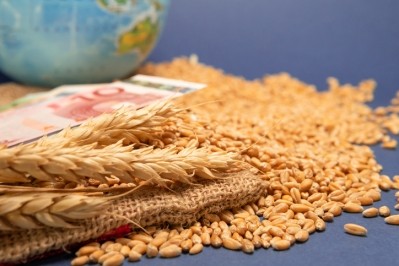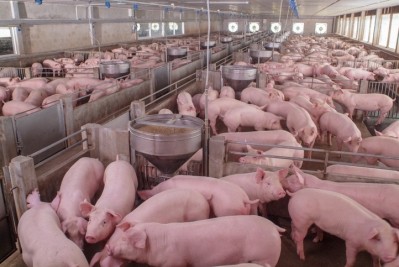Poultry feed production surges in Great Britain despite industry uncertainty: AHDB report

“The [poultry] industry still appears to be recovering from high input costs and the impact of avian influenza but is looking more positive in terms of feed demand,” notes the latest AHDB report outlining animal feed production data for GB.
Significant shifts and trends are shaking up the GB animal feed manufacturing landscape. This season-to-date (Jul-Jan), total animal feed production surged to 7.81 Mt, marking a robust 1.3% increase compared to the same period last year. However, beneath the surface lies a complex narrative of sectoral ups and downs.
IPUs leading the charge
Poultry feed production by compounders declined by 0.6% (14 Kt) so far this season. But integrated poultry units - specialist, fully integrated poultry manufacturers that produce their own poultry feed in house - stood out with a staggering 12.4% increase in production, boosting the overall picture.
Cattle feed production saw a marginal uptick of 0.8%, possibly attributed to challenges in finishing cattle amidst adverse weather conditions.
Notably, sheep feed production took a significant hit, plummeting by 7.8%, likely a repercussion of reduced demand amid declining sheep meat production and cost pressures.
Similarly, pig feed production witnessed a downturn, down 0.9% from last season and 4.6% from the five-year average, reflecting ongoing challenges in the UK pork industry.
A report in December 2023 showed that the UK pig population was at its lowest level for over a decade. The drop has been driven by a substantial fall in the numbers of fattening pigs; the authors said the decrease in volumes was not surprising given the size of decline seen in the breeding herd in 2022 and the negative impacts the heatwave that summer had on fertility.
Surge in barley usage
In the realm of cereals usage, barley emerges as a standout performer, witnessing a 2.9% rise in usage, driven by its cost advantage over other cereals. Wheat (-0.3%), oats (-29.1%) and corn (-11.8%) all saw declines. With barley heavily integrated into feed rations, its dominance is expected to persist, reflecting shifting dynamics in the cereals market.
“Our most recent Early Bird Survey showed a reduction in total wheat area this year, but an increase in total barley area, suggesting greater availability of barley comparative to wheat next season.”
Looking ahead, AHDB's supply and demand estimates forecast sluggish animal feed demand, with cautious optimism tempered by lingering concerns over input costs, particularly in the cattle and pig sectors.
Poultry producers face 'uncertain' future
Despite the uptick in poultry feed usage, producers of British eggs and poultry meat are facing an uncertain future, according to a recent survey conducted by the UK's National Farmers Union (NFU). That organization calls for urgent action from the government to provide support and reform the supply chain.
The survey, which assessed the impact of the past two years on poultry production and farmers' intentions for the next two years, revealed concerning findings. It showed that 24% of laying hen producers and 15% of broiler producers were either unlikely or unsure if they would continue producing poultry beyond November 2025. The primary reason cited for this trend was inadequate returns, indicating that many businesses have struggled to maintain profitability.
Additionally, the survey underscored several key concerns within both sectors, including:
- The threat of bird flu, with 94% of egg producers and 92% of chicken meat producers expressing significant concerns.
- Perceived unfairness in the supply chain, with 90% of egg producers and 76% of chicken meat producers highlighting this issue.
- Escalating energy prices, which were a major worry for 92% of egg producers and 61% of chicken meat producers.
- The persistent challenge of being undercut by imports, causing concern for 90% of egg producers and 78% of chicken meat producers.
Feed, energy and labor costs
Both GB egg and chicken meat producers reported significant increases in production costs over the past two years.
In the laying hen sector, this included average increases of:
- 31% for feed
- 35% for electricity
- 22% for workforce salaries
- 23% for pullets
In the poultry meat sector, this included average increases of:
- 31% for feed
- 41% for electricity
- 20% for workforce salaries
- 13% for chicks














